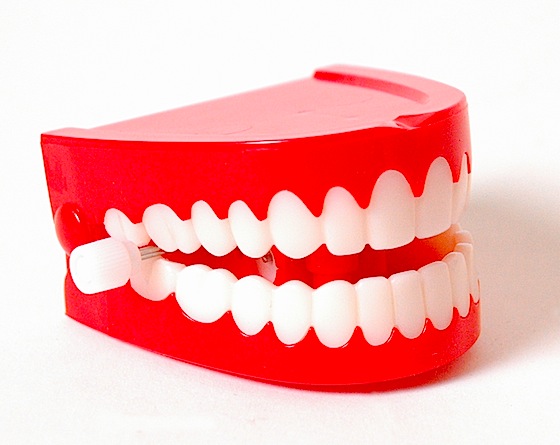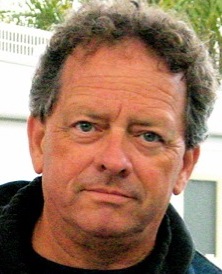'Tis the Season

We are right in the thick of the American and European holiday season. For most of us there is a lifetime of tradition, culture, and religion behind the ways that we engage and participate in the season. Some of us have kept steady to the traditions, some have changed our responses in subtle or not so subtle ways. Some even attempt to ignore the season entirely. Whatever you make of this time, we hope that it is good for you, and propels you along in your art, your craft, your present impact upon the world that you are creating. We wish you all the very best as you make your way.
Wordlessness
Last week we talked a bit about Martha Beck's book,
  Finding Your Way in a Wild New World
Finding Your Way in a Wild New World . I promised that you would hear more about it in coming weeks as I work my way through it in detail. Today I want to focus for a bit on the first of the four technologies that she describes: wordlessness. . I promised that you would hear more about it in coming weeks as I work my way through it in detail. Today I want to focus for a bit on the first of the four technologies that she describes: wordlessness.

Wordlessness is more than closing your mouth. It is also stopping the chatter inside your head. If you have never intentionally done this, it might seem impossible. You might even be under the impression that the nonstop voice in your head is actually synonymous with who you are. One of the most profound experiences of my life was the moment when I discovered that the talker inside my head was not actually who I am.
Last week we talked a bit about the technique of observing the chatter to stop it. That's a really good method, and it works well for me. There are other methods that are very effective as well. One that Beck talks about, which I found very effective, is to focus your attention on the space between your eyes. For some reason, the effort required to imagine the three or so inches between your eyes, and to feel that space in your awareness, is not something that can be done while thoughts about what to cook for dinner, or what to buy tomorrow in the stock market are racing around the track. When you focus on the space between your eyes, the chatter stops completely.

Another technique that Beck borrows from Eckhart Tolle is to close your eyes, hold your hand out in front of you, and feel your hand, without looking at it or touching it with your other hand. In other words, feel your hand from the inside. When you practice one of these or several other techniques to induce wordlessness, you are focusing your awareness in the present moment. The chatter stops, because the chattering mind is intent on logically deducing your future from the past. This chatterbox cannot work with the present moment, because the present moment needs no extrapolation or forecasting. It is here now. The very first time I successfully stopped the chatter inside my head, I was astonished. I thought that voice was me, because it was always present. I could not recall a waking moment in which I had not had the running monologue going on.
But Why?
But why, you ask, would I want to stop my brain from thinking? How will I come up with answers to my problems that way. Isn't that just idle day dreaming? I need to do something to be productive. Beck, and Tolle, and Richard Rohr, and Bruce Lipton, and Malcolm Gladwell, and Lao Tsu and countless others all agree that the chatter of the active logical mind is an inhibitor to the kinds of insight and clarity that we need to be the smartest, and do the best work that we possibly can—especially when the problems we face are not straightforward and logical.

The first thing that I discovered when I fell into wordlessness is that it is by no means empty. This state of mind is not blank. It is rich and full of perception of what is going on around you. It is full of impressions about what is. It simply is not verbal. Language is one of the most remarkable attributes of the human mind. I love language. I got my degree from the University of Washington in theoretical linguistics. But as the old saying goes, when you are a hammer, everything looks like a nail. When you attack every problem linguistically, you can only get answers that are already worked out in your framework. Some problems are not simple enough to solve with language. Some facts about your situation, cannot be described in English. Or Spanish. Or Japanese. Some concepts clear in one language do not exist in another. Language gets its power by defining and expressing ideas. But to define an idea you must put boundaries around it. This is part of the concept, that is not. The very act of language limits how we perceive. The power of wordlessness is in setting aside the boundary functions of language so that the mind can explore uncharted territory.
Well, Duh!

As you begin to practice wordlessness, you might notice a "well, duh!" character to the insights that come. This is because these insights are remarkable. They change everything. And when they do, it seems so obvious that you cannot see how you missed it before. It's like when you see some amazing new product on the market and the light goes on, a day late and a dollar short, and you wonder, "Why didn't I think of that?" This happens because the wordless mind is not bound by what you know from the past. When we talk in a future note about Oneness, you will see how this lack of language boundaries seems to tap into something bigger than you. It's not that you cannot use language to express these ideas, and in fact after they come, language serves well to express them. But language is a descriptor, not an innovator.
One of the challenges of wordlessness is to set aside expectations. It has been my experience that entering a wordless state brings amazing insights, and synthesizes my understanding of situations, and formulates solutions in ways that I could not previously see. But I am careful not to set expectations around this. Analysis is the enemy of wordlessness. Looking for evidence that it worked is toxic to the process. When insight happens, you just know it without effort. The linguistically biased logical part of your brain wants to analyze what you experience. There will be time for that later.
When you are in a wordless state, the greatest challenge is not to slip back into language to define what is happening. This takes practice. At first, you find yourself so fascinated with your ability to turn off the chatter that the chatter wants to come back and talk about it right away. As you practice, you will be able to hold the wordless state longer. Eventually you will be able to hold it for long periods while you go about your activities. The more you learn to hold your mind in this active state of wordlessness, the more powerful you will become in your ability to take intuitive control of your life, your creativity, your relationships, and your decisions.
Use the Post-its!

This week, I spent some time practicing wordlessness. I am not new to this concept, having first discovered it several years ago when listening to a series of conversations between Oprah Winfrey and Eckhart Tolle on radio. I have practiced wordlessness a great deal since that time. It has provided me with the resources to get through some extremely challenging situations. But I tend to be spotty in my practice of wordlessness at best. Sometimes I've got it. Sometimes I forget. The tailspin of emotions that I described last week is a classic example of how I am when the monkey brain is at his chatterbox best. It's not pretty, and the world is surely coming to an end any minute.
But this week, with some help from Martha Beck, I wandered the hills at Windhook without a verbal thought in my head. Something quite remarkable happened. I met myself. As I was walking around, a thought came into my head. "Use the post-its." Of course! What a brilliant idea! For as long as I have known Peggy, she has been the post-it queen. When there is a problem to tackle, she gets out the post-it pad and a felt marker, and starts sticking up notes on the nearest smooth surface. It's a brainstorming technique that you have probably used at some point in a seminar or workshop or somewhere. So you are wondering now what was the problem for which my wordless mind gave me this great insight to use the post-its?
Simply put, the question at hand is, "Who am I?" The tailspin I wrote about last week was over the fact that my self image, formed and nurtured over sixtyone years, was coming apart at the seams. My concept of myself as the artist who founded and ran the wildly popular and successful artists' retreat at Windhook had taken a huge hit with the loss of our funding, and I was not sure if the image I had for myself was going to work anymore. What drove me to walk the hills, to seek answers in this wordless meditative state, was a massive capitulation of my understanding of who I was. And the answer would come from the post-it notes. I had an intuitive sense of the answer that the post-its would yield immediately, while still walking around. But I needed to bring the chatterbox up to speed. I needed to understand this with all the parts of my understanding.
Ah Ha!
So today, with Peggy's help, I used the post-its. We made a list of all the strengths, talents, and skills that make up who we are. It was a very informative exercise. For each of us, the lists overlapped but were very different. Peggy's list included all those amazing things about her that make people wonder at her hospitality, her engaging warmth, and her ability to make anyone feel good and welcome and accepted. You could feel the feminine power and nurture in the pile of sticky notes stuck to her side of the board. My sticky notes were different from hers. They were about making things, making art, using words and teaching, exploring uncharted territory, and bringing others along for the adventure. The insight I had gotten wandering the hills in silence was that all of these things are elements of who I am and what I must be about. I have never really seen it that way. I thought that who I was was a frustrated artist.
 What I am seeing this week is that being an artist is a single aspect of a larger picture. I am not an artist. I am not a writer. I am not a teacher. I am not a problem solver. I am not a leader. I am not maker. I am not a visionary. All of these things are tools in my box. What I am is a guy who is awakening to a world in which all of us can be more. A world in which more is possible than we can imagine. Windhook is the name we have put on the beginnings of our understanding of this world. Those beginnings are unfolding into a space far bigger than we knew.
What I am seeing this week is that being an artist is a single aspect of a larger picture. I am not an artist. I am not a writer. I am not a teacher. I am not a problem solver. I am not a leader. I am not maker. I am not a visionary. All of these things are tools in my box. What I am is a guy who is awakening to a world in which all of us can be more. A world in which more is possible than we can imagine. Windhook is the name we have put on the beginnings of our understanding of this world. Those beginnings are unfolding into a space far bigger than we knew.
I am growing into a realization that who I am is not dependent on the success or failure of a construction project. It is not dependent on how many art shows I can get into. It is not dependent on the leadership I can bring to arts organizations in my community. It is not what I thought it was at all. Who I am is about listening. About being in tune with an imagination that I am only beginning to grasp. It is an imagination bigger than me. It is a stream of energy I can only tap into but not control. Artists know this energy. It is the zone you get into when you are working and the work makes itself. It is the timelessness that makes hours seem like minutes. It is the impression that your work is not your own, but comes to you from a source beyond your awareness. It is what Martha Beck refers to as Oneness. But I'm getting ahead of myself. Oneness is the second technology that she addresses in her book, and we are focused today on the first technology, wordlessness. Let it suffice for now to say that wordlessness is the doorway to oneness. We will enter there soon enough.
The reason I tell you all this is to illustrate how the ideas in Beck's book are practical for me. My story is just one. But her book addresses the desperate need in our wild new world of the twentyfirst century for trackers to forge a path through densely matted jungles of rampant growth and change or for wayfinders to navigate a course through dense fog and turbulent seas without landmarks. It is the only way to negotiate our time. Jobs are vanishing and changing at an explosive pace. Assumptions about the future are impossible. It is not possible in these days to camp on old expectations and follow worn paths. To survive as a creator in these times, one must get over the notion that you can define yourself and stand pat. The only path is the path you find with each step. And wordlessness is the compass.

|








 What I am seeing this week is that being an artist is a single aspect of a larger picture. I am not an artist. I am not a writer. I am not a teacher. I am not a problem solver. I am not a leader. I am not maker. I am not a visionary. All of these things are tools in my box. What I am is a guy who is awakening to a world in which all of us can be more. A world in which more is possible than we can imagine. Windhook is the name we have put on the beginnings of our understanding of this world. Those beginnings are unfolding into a space far bigger than we knew.
What I am seeing this week is that being an artist is a single aspect of a larger picture. I am not an artist. I am not a writer. I am not a teacher. I am not a problem solver. I am not a leader. I am not maker. I am not a visionary. All of these things are tools in my box. What I am is a guy who is awakening to a world in which all of us can be more. A world in which more is possible than we can imagine. Windhook is the name we have put on the beginnings of our understanding of this world. Those beginnings are unfolding into a space far bigger than we knew.


